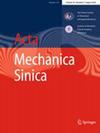Artificial neural network based stamping process design for three-point bending
Abstract
This research encompasses three-point bending based on artificial neural networks (ANNs) for a simple accurate process design. Uniaxial tensile tests are carried out for 22 steel and aluminum sheet metals with different thicknesses to characterize their mechanical properties, such as the Young’s modulus, yield stress, strength, strain hardening, etc. Approximately 20–30 three-point bending tests are conducted for each sheet metal with different gaps and punch strokes to obtain different bending angles before and after spring-back ranging from 60° to 165°. The angles after spring-back are modeled by an ANN as the output. The inputs for the ANN model include the mechanical properties obtained from uniaxial tensile tests, as well as gap and punch stroke used in three-point bending. The angles after spring-back predicted by the ANN model trained by 22 materials are compared with experimental results to evaluate its performance. The comparison shows that the trained ANN model can precisely predict the angle after spring-back with a maximum error of less than 3.7%. The trained ANN model is also tested for unseen gap and stroke, to design the processing parameters in three-point bending of advanced high-strength steel (DP980) and an aluminum alloy (AA6K21-T4). The application demonstrates that the trained ANN model can design the process parameters with high accuracy even for unseen data. This study shows that the ANN model is strongly suggested to be used in process and tool design/optimization of metal forming processes to achieve high accuracy and generalizability.

 求助内容:
求助内容: 应助结果提醒方式:
应助结果提醒方式:


